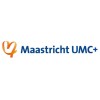
Three Different Transdermal Doses of Rotigotine in Subjects With Idiopathic Restless Leg Syndrome...
Restless Legs SyndromeThe primary objective of this trial is to demonstrate that rotigotine (SPM 936) is efficacious in subjects with idiopathic restless leg syndrome (RLS). Additional objectives are to investigate the safety and tolerability of rotigotine. The primary variables are the absolute change from Baseline in the International Restless Legs Severity Scale (IRLS) sum score and Clinical Global Impression-Global Improvement (CGI) Item 1 (severity of illness) score at the end of the Maintenance Period. Subjects will be randomized to receive either placebo, 2.25, 4.5 or 6.75 mg/day rotigotine in a 1:1:1:1 (active:placebo) fashion. Approximately 450 subjects will be enrolled in this trial, participating at approximately 50 sites. The maximum duration of the trial is approximately 8 months (3-week Titration Period, 6-month Maintenance Period, 7-day Taper Period, and 30-day Safety Follow-Up Period). Subjects who complete the 6-month Maintenance Period will be eligible to participate in an open-label extension trial. Subjects who do not complete the 6-month Maintenance Period or who choose not to participate in the open-label extension trial will complete a 3-day Safety Follow-Up Period. Two different patch sizes will be used (5 and 10 cm2). Active patches will contain either 2.25mg (5cm2) or 4.5mg (10cm2) of rotigotine.

Chromium Picolinate for the Treatment of Metabolic Syndrome
Metabolic Syndrome XPrediabetic State3 moreThe purpose of this study is to determine whether chromium supplements can reduce symptoms of metabolic syndrome, a collection of symptoms that increase one's risk for developing heart disease, stroke, and diabetes.

Exploring the Mechanism of a Probiotic Combination VSL#3 in Irritable Bowel Syndrome
Irritable Bowel SyndromeIrritable bowel syndrome (IBS) is a very common chronic gastrointestinal disorder. Existing therapies for IBS are still far from satisfactory and new therapies are being constantly sought. Probiotics are promising candidate for the prevention and treatment of IBS. However, its efficacy and mechanism is still unclear. The current study aims to evaluate the effects of a combination probiotic, VSL#3, on symptoms and rectal sensitivity in patients with IBS. The underlying mechanism will also be investigated. We will recruit forty patients with Rome III IBS and randomized them, in a parallel group, double-blinded design, to take four VSL#3 capsules or placebos, twice daily, for six weeks. Before and after treatment, patients will be assessed for their symptoms, rectal sensitivity, as well as saliva and fecal melatonin levels. Bowel symptom diary and weekly satisfactory relief of bowel symptoms will also be recorded and evaluated.

A Study of JNJ-30979754 (Decitabine) in Patients With Myelodysplastic Syndrome
Myelodysplastic SyndromeThe purpose of this study is to to determine the recommended dose level of JNJ-30979754 (decitabine) as well as to assess the safety and effectiveness in patients with Myelodysplastic Syndrome (MDS).

Randomized, Double-blind Study for the Evaluation of the Effect of Losartan Versus Placebo on Aortic...
Marfan SyndromeTo study the effect of losartan (an angiotensin receptor blocker-ARB) on aortic root growth in patients with Marfan syndrome, already treated with beta-blockers (BB). The effect of losartan will be compared to placebo. Losartan or placebo will be added to the treatment regimen in a two-step up-titration scheme over 2 weeks. Start doses of Losartan will be 25 mg for subjects under 50kg of weight and 50mg if the weight is over 50kg. Uptitration will be guided by the tolerance of the drug by the patients. Patients will be contacted by phone call for assessment of side-effects before second step of uptitration. Daily maximal doses of Losartan will be 50mg for subjects under 50kg of weight and 100mg if the weight is over 50kg

Interleukin-2 Treatment for Wiskott-Aldrich Syndrome
Wiskott-Aldrich Syndrome (WAS)X-linked ThrombocytopeniaFunding Source--FDA OOPD. Orphan Product Grant Number--1R01FD004091-01A1 Context: Wiskott-Aldrich syndrome (WAS) is a fatal, devastating disease with ill-defined treatment modalities, which affects young boys. Classic WAS is characterized by a clinical triad of thrombocytopenia, eczema and severe, recurrent infections. Despite diagnostic and therapeutic advances most WAS patients die at less than 12 years of age due to infections, hemorrhage, malignancy or complications from treatments. WAS patients suffer from herpesvirus infections as a result of poor Natural Killer (NK) cell function (cytotoxicity). In the laboratory, the investigators have seen correction of WAS Natural Killer Cell (NK) function after treatment with Interleukin-2 (IL-2). Objectives: Initiate a prospective clinical trial by treating WAS subjects with IL-2 and using safety as the primary endpoint. Restoration of NK cell cytotoxicity and effects on cytoskeletal dynamics are secondary endpoints. The investigators will also observe patient clinical status (eczema, infections, use of treatment dose antibiotics, food allergies, etc). Study Design/Setting/Participants: This is a prospective clinical trial treating 9 WAS subjects in the Clinical Translational Research Center (CTRC) with IL-2. Intervention: The investigators propose to subcutaneously administer 0.5 Million Units (MU)/m2 of IL-2 daily to WAS subjects for 5 days. Research treatment will be repeated 2 and 4 months later. Inter-patient dose escalation will be employed to 1 MU/m2 and/or 2 MU/m2 based on safety as the primary endpoint. Study Measures: The investigators will observe safety and tolerability measures and perform assays on subject blood samples prior to and after research treatment to observe improvement in NK cell function.

The PostprAndial eNdothelial Function After Combination of Ezetimibe and simvAstatin Study
Metabolic SyndromeThe purpose of this study is to investigate whether low-dose simvastatin in combination with ezetimibe in comparison to high-dose simvastatin alone, has a beneficial effect on the function of the endothelium after an oral fat load in patients with metabolic syndrome.

Idarubicin + Cytarabine and Lenalidomide in Patients With Myelodysplastic Syndrome (MDS), Acute...
Myelodysplastic SyndromeAcute Myeloid LeukemiaThe purpose of this study is to: Test the safety of the research study drug, lenalidomide, when given with Idarubicin and Cytarabine See how many respond to combination treatment with lenalidomide, Idarubicin and Cytarabine See how long people respond to this combination therapy See how long people live after being treated with this combination of drugs

Restless Legs Syndrome Treatment With Botulinum Toxin
Restless Legs SyndromeRestless Legs Syndrome (RLS) is a common sensori-motor disorder that causes sensory discomfort and motor restlessness, most often in the legs, which improves with movement. Although medications are available to treat the disorder, many people either experience side effects that prevent them from continuing on the medication or do not sufficiently respond to current RLS medications. Recently, botulinum toxin type A (BNT) has been reported to relief RLS in patients with severe symptoms but this was not confirmed by other anecdotal reports. The investigators propose to test the efficacy of BNT on RLS symptoms by designing a more controlled study. Ultimately, this may lead to extend the therapeutic arsenal of this disorder.

Topical Rapamycin for Fibrofolliculomas
Birt-Hogg-Dubé SyndromeThe purpose of the study is to determine whether topical application of rapamycin can lead to reduction in size and/or number of fibrofolliculomas in BHD patients and may prevent the growth of new ones. Secondary we evaluate rapamycin safety, formula acceptance and patient satisfaction.
